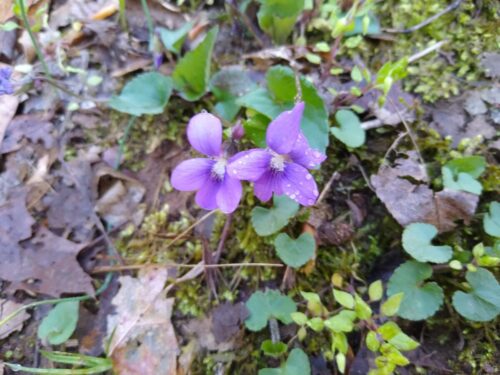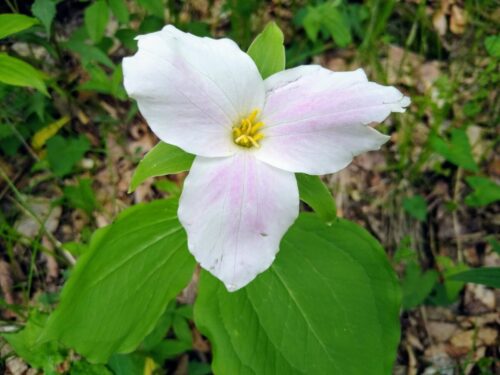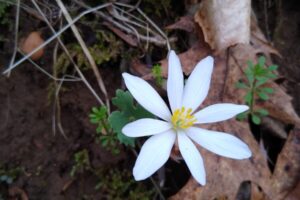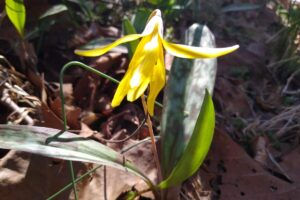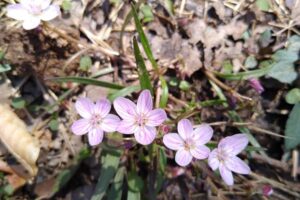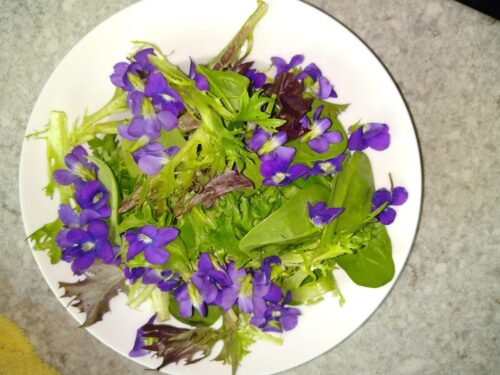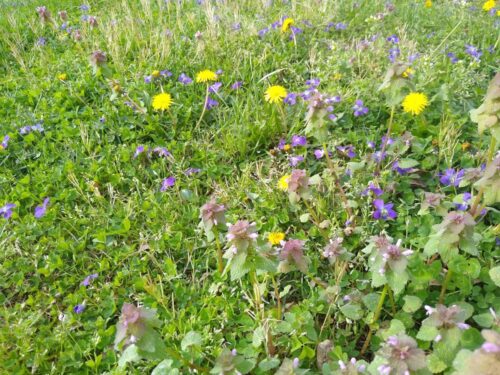The Ant-Plant Connection
May 19, 2022 8:19 am
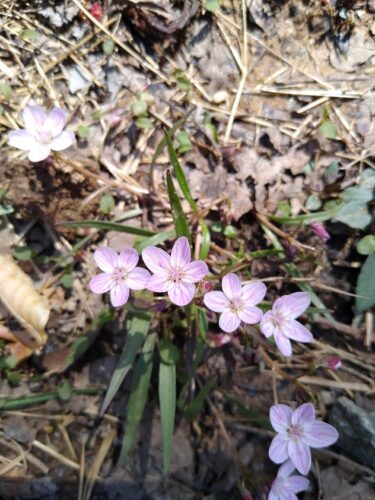
By Ellen Powell, DOF Conservation Education Coordinator
Readers of my Field Notes posts will know that I like to introduce nerdy words. Today I have two: elaiosome (pronounced eh-LIE-uh-sohm) and myrmecochory (pronounced mer-me-ko-CORE-e). Together they describe a fascinating connection between ants and plants.
Myrmecochory is a seed dispersal strategy used by some familiar plants. It means their seeds are carried away by ants! Myrmecochorous seeds have attached structures called elaiosomes. Ants are attracted to these structures, which are full of proteins and lipids. They carry the seeds back to their nests, where they eat the elaiosomes and discard the seeds in the colony’s refuse pile. The seeds then have a nutrient-rich place to grow. Studies have shown that these types of seeds actually germinate best when the elaiosomes have been removed.
What got me thinking about elaiosomes? Wildflowers and a weedy lawn! A number of our spring woodland natives have seeds spread by ants. Here are a few familiar ones:
- Violets
- Trillium
- Bloodroot
- Trout lily
- Spring beauties
This year I wanted to see elaiosomes for myself, so I turned to my lawn. It was full of violets, but since I ate most of them in salads, not many of the flowers went to seed. However, I was able to gather some seeds from purple deadnettle, another common lawn weed.
- Violets add color and Vitamin C!
- Weedy lawn with purple deadnettle in foreground
In shaking the seeds out on a paper plate to photograph them, I managed to get a few ants in the process. The little white bits on the ends of the seeds are the elaiosomes.
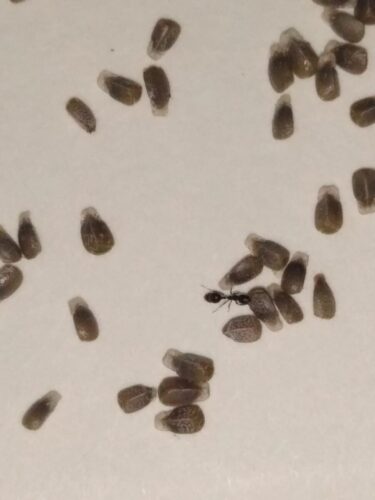
An ant checks out elaiosomes on purple deadnettle seeds.
Incidentally, letting my lawn get colorful this spring was intentional, not lazy. Allowing lawn weeds to bloom in spring provides nectar for early pollinators. (My lawn did get its first mowing of the year before the HOA complained, so that was a win for me and the bees.)
Eventually I plan to eliminate the lawn altogether, in favor of a native plant garden. If that’s not possible for you, consider mowing high enough to allow some weeds to bloom throughout the spring and summer. In addition to feeding pollinators, you too can support ant-plant relationships!
Tags: Insects, Woodland Plants
Category: Education

